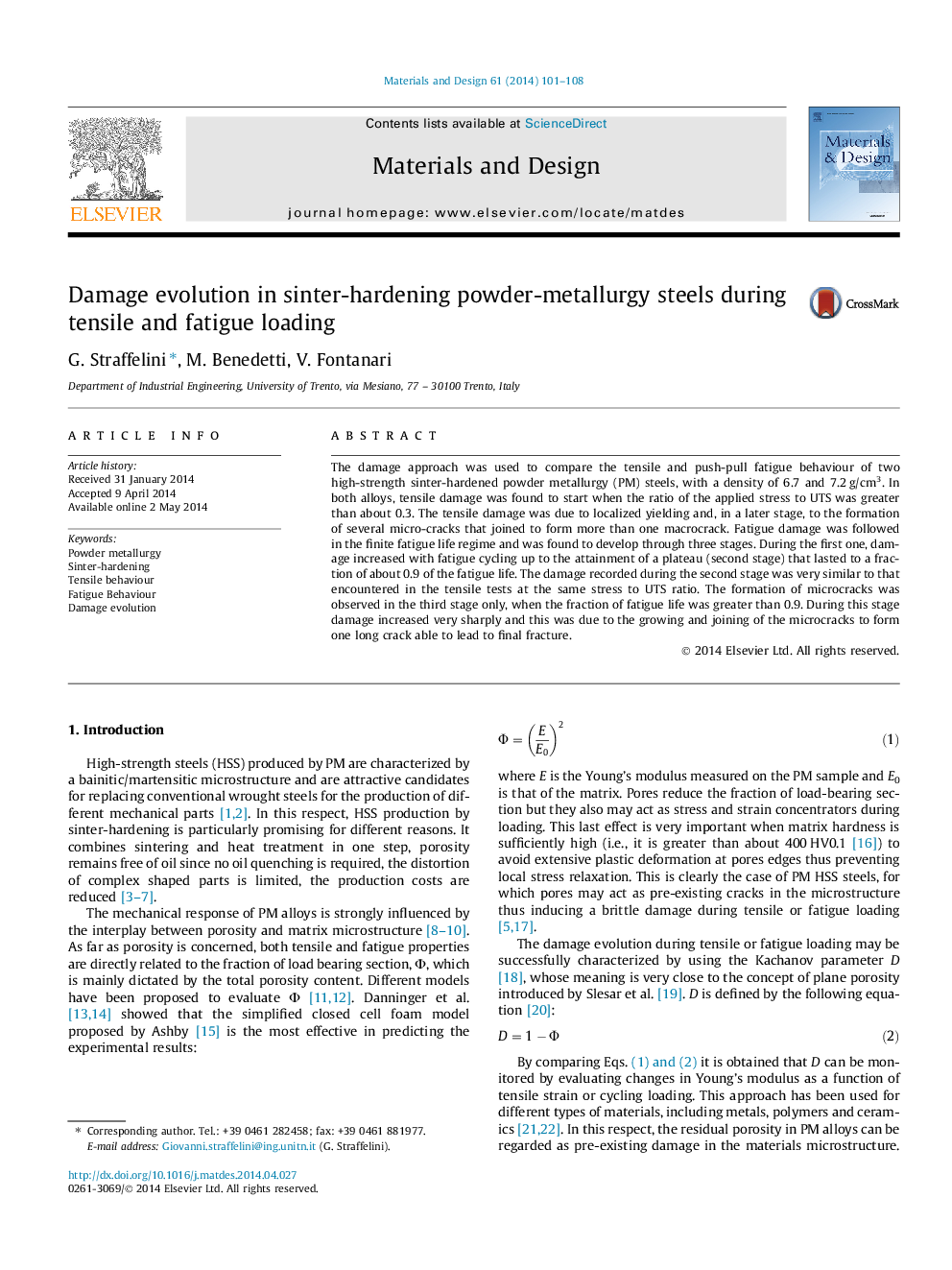| Article ID | Journal | Published Year | Pages | File Type |
|---|---|---|---|---|
| 829136 | Materials & Design (1980-2015) | 2014 | 8 Pages |
•The tensile and push-pull fatigue damage of two high-strength PM steels were compared.•Tensile damage started when σ/UTS was greater than 0.3.•Fatigue damage was found to develop through three stages.•Detailed information on the mechanisms were obtained and discussed.
The damage approach was used to compare the tensile and push-pull fatigue behaviour of two high-strength sinter-hardened powder metallurgy (PM) steels, with a density of 6.7 and 7.2 g/cm3. In both alloys, tensile damage was found to start when the ratio of the applied stress to UTS was greater than about 0.3. The tensile damage was due to localized yielding and, in a later stage, to the formation of several micro-cracks that joined to form more than one macrocrack. Fatigue damage was followed in the finite fatigue life regime and was found to develop through three stages. During the first one, damage increased with fatigue cycling up to the attainment of a plateau (second stage) that lasted to a fraction of about 0.9 of the fatigue life. The damage recorded during the second stage was very similar to that encountered in the tensile tests at the same stress to UTS ratio. The formation of microcracks was observed in the third stage only, when the fraction of fatigue life was greater than 0.9. During this stage damage increased very sharply and this was due to the growing and joining of the microcracks to form one long crack able to lead to final fracture.
